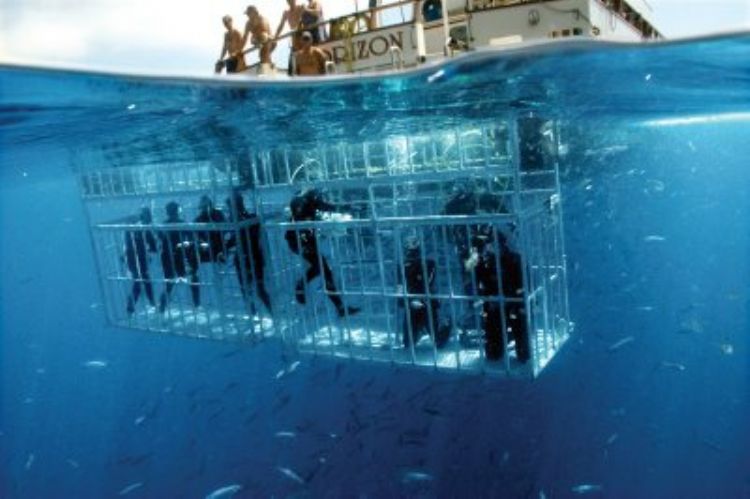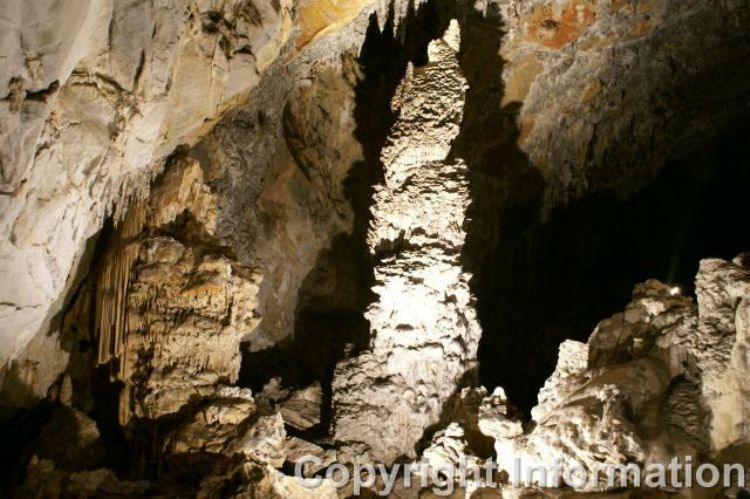Guadalupe Island in Baja California, and the White Sharks

This island, born from volcanic activity, with a vast area of 250 square kilometers, belongs to the state of Baja California Norte, and is considered as part of the district of Ensenada. It is located 240 kms away from the peninsula and is considered as a âSanctuary for Wild Lifeâ since 1975.
This characteristic makes it a place worth visiting and admiring. The weather on the island is semi-warm, but it can become an arid-dry climate during the hottest time of the year. Although it was discovered in 1602 by Sebastian Vizcaino, its climate and distance from the peninsula preserved it from being colonized: it remained virgin until the early 19th century when European fishermen and hunters arrived. The species introduced by these people caused an ecological cataclysm on the site, and by the decade of the 50âs it was described as a biological cemetery.
Nevertheless, after being left by humans and furthermore after being declared a Reserve Area, the homeostasis (process by which the natural environment recovers after a severe event) was accelerated. This process has contributed to the recovery of birds and mammals. Among the mammals of the site, we can mention the sea lions, the Guadalupe Fur Seal (endemic species) and the seal; amongst birds, the Xanthusâs Murrelet, the albatross and a certain species of owl, and amongst fishes and sea creatures, the abalone (widely hunted and appreciated), the lobster, and several species of tuna.
However, all the above mentioned species are usually a prey of the most feared predator of the region: the great White Shark.
The White Shark Population.
Even though they possess a bad reputation, white sharks are not as dangerous to humans as humans are to them. Although this species has an only natural enemy (the killer whale) its population has been reduced dramatically due to human hunting. Sharks, however, have found at Guadalupe Island an excellent habitat for their offspring, feeding themselves from the aforementioned animals, being mammals their main source of food.
Fishermen that roam the waters of the island have frequent encounters with these creatures, and this is why diving with them has become popular in the zone. This diving sport is not for the fainthearted, but for those who seek excitement and adventure. Obviously, a steel cage protects divers from the big predators, but not from the smaller ones that can sometimes go through the bars. The observation time varies according to the amount of people on the vessel. Only 12 people are allowed to dive per trip.
Groups of scientists usually visit the island to study sharks. A popular tourist activity here is to observe sharks and (in some legally-allowed seasons) hunt them as a sport. These activities can be made from special boats that depart from close ports like San Diego. It is possible to reach the island from a plane as well, which departs weekly from the âManeaderoâ in Ensenada.
As an average, trips last 4 days and boats anchor close to the shore, although it is possible to arrive to the island in a private ship. To make this possible, a request must be made with the shipâs and crewâs information to the âComisión Nacional de Areas Protegidasâ, (National Commission for Protected Waters) along with a fee which varies according to the size of the ship.
Some American travel agencies offer all-inclusive packages for the visit, with a guaranteed observation of white sharks. using special bait to attract them. If you are in the mood to practice some shark hunting, you must be careful and check that the company you choose has qualified personnel and equipment in good condition (there have been cases where the sharks break the cage, due to the fact that it was old or in bad conditions).
Another important aspect to consider is that the best time of the year to visit the island (although not the only one) is from September to April., seasons where there are no storms. The experience of feeding the sharks is unforgettable and therefore, highly recommended for all those who love the adrenaline and the sea! .
Article produced by the Editorial Team of "Explorando Mexico".
Copyright Explorando México, All rights reserved.
Photo: Shardivers.blogspot






